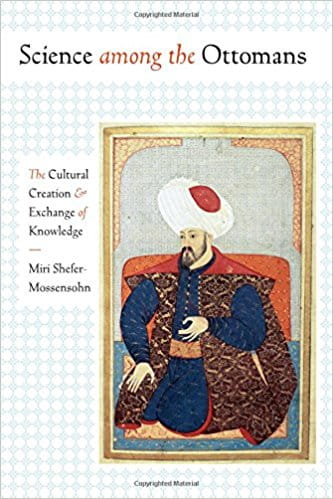
Science among the Ottomans: The Cultural Creation and Exchange of Knowledge
David W. Tschanz
Miri Shefer-Mossensohn
2015, University of Texas Press, 978-1-47730-359-7, $55 hb.
Historians have long argued that the Ottoman Empire failed to grow scientifically and technologically after the medieval Islamic Golden Age. Innovation was not encouraged, leading to stagnation. Miri Shefer-Mossensohn challenges this perception by comprehensively examining the role of science and learning in Ottoman culture. While not the most creative, the Ottomans were masters of adaptation, turning the inventions of others to their own needs and improving on them. By 1877, for example, they had built a transcontinental telegraph system that “brought a communications revolution throughout the empire,” and early in the 20th century they inaugurated the Hijaz Railway, which connected Damascus and Madinah. Absent, however, is a deeper examination of how Ottoman science came to focus more on importing and adapting technologies than on building the research framework to nurture a culture of innovation.
You may also be interested in...

The Ebb and Flow of History on the Zambezi River
In tracing the past six centuries of history, historian Malyn Hewitt captures the cyclical rise and fall of the river and its people.
British Library’s 500-Year-Old Nizami Manuscripts Shed Light on Power of Art and Poetry in 12th-Century Herat
Persian and Mughal scholar and specialist Barbara Brend presents a comprehensive study of one of the most highly esteemed works of Persian Literature.
Drawing New Conclusions About the Status of Women in Ancient Egypt
Egyptologist Mariam F. Ayad that gender bias among historians accounts for an underrepresentation of women’s lives in historical studies of Egypt.